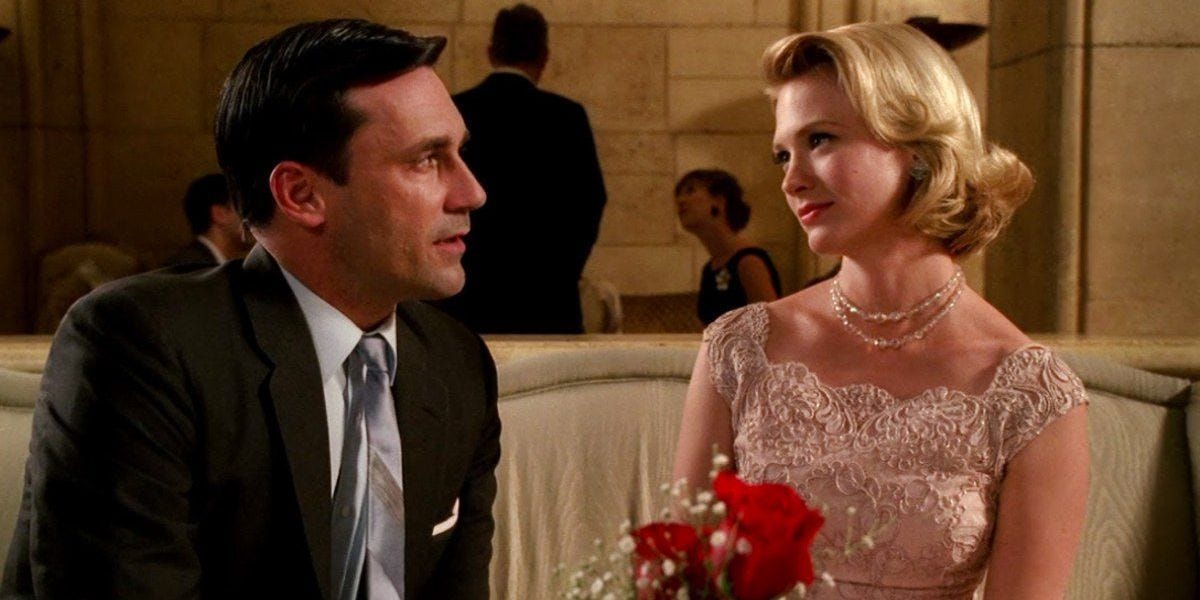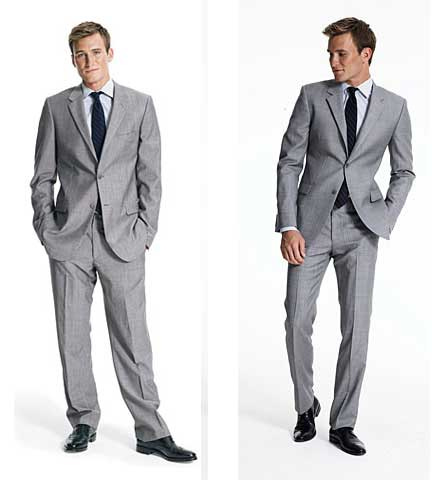For better or worse, we've evolved to judge others within a split second.
Upon seeing someone, our minds immediately place them into one of many buckets:
threat or non-threat,
potential mate or non-mate,
trustworthy or untrustworthy.
At first, all of this might seem unfair. Afterall, why should we put people into categories purely based on appearances? It turns out there’s a pretty good reason for it.
The most likely explanation is that we developed this behavior when the world was a more dangerous place. In the distant past, telling friend from foe often meant life or death. Those that took too long perished and those who were capable of quick judgement survived. Thankfully, the world is much different now, but we’ve retained the same ability.
You can test this the next time you're in a public place. Scanning the area, you'll notice that you can quickly place people into general buckets.
This person probably works in business, this person probably works in the arts, and this person probably works in tech. We simply look at a person's posture, demeanor, and clothing and draw connections based on our previous experiences.
What we wear shapes how others think of us. It affects the bucket we get placed into in the minds of others. As a result, we can think of clothing as a form of nonverbal communication.
Admittedly, all of this might sound quite vain. Why should we care about what others think of us? Why should we care so much about our appearance?
But consider the following: No matter what we do, people are going to instinctively categorize us. Why not consciously make sure they put us in the correct category?
Perhaps you would like to be thought of as kind, refined, and intelligent. Why not use style to convey that?
The case for good style:
Consider the following picture.
Take a second to notice your judgements about each side of the picture.
Chances are, you would be more likely to trust the man on the right than the man on the left. Perhaps you would even say that the man on the right is wealthier, more attractive, and more powerful.
But on both sides, it is the same man wearing the same suit. The only difference is the suit’s cut. On the right, we can clearly see that the suit has been tailored. Something about it is pleasing to the eye. It conforms to the unique angles and proportions of the man's body. It looks expensive.
Although the man on the right looks wealthier, ironically, this is not necessarily the case. All we know is that the man on the right invested about $50 and an hour of his time to tailor his suit. But it doesn't seem like this. Our involuntary judgments scream out to us that something is different.
All of this might seem like a fairly ordinary observation. Of course we should wear clothes that fit us, and tailor our suits or dresses, and look presentable. We've all heard that dozens of times from our parents and grandparents.
But we encounter an interesting lesson when we take it one step further and ask why.
Dressing well can make you appear more credible:
Given that we judge people unconsciously, an interesting side-effect is that we tend to trust people who are well-dressed.
Consider the following thought experiment. Imagine that you are traveling alone in a foreign city and get lost. Your phone is dead and you decide to ask for directions.
Would you ask the woman in sweatpants or a woman wearing well-fitting and flattering clothing? Chances are, you'd ask the well-dressed woman. For better or for worse, we've learned to associate good style and attractiveness with competence. And it's likely not a bad assumption.
Dressing well takes effort (not much, but effort nonetheless), and if you take the time to present yourself well, you likely take the time to improve the other areas of your life too. You're more likely to be a serious person and thus a better resource.
You might have experienced this phenomenon in your own life. When you start dressing well and taking care of yourself, you'll likely find that confused tourists are attracted to you like moths to a flame.
"Where is the nearest bank?"
"How do I get to XYZ place?"
Admittedly, this is not a very appealing side-effect. Few people want the constant attention of lost strangers. But the good thing is that this effect is not unique to Italian tourists.
Instead, being well-dressed carries over to all interactions, with your boss, with your peers, and with strangers. The more you resemble a serious person, the more people will take you more seriously.
Who would willingly choose to be perceived as less trustworthy and less competent?
Dressing well is a form of politeness:
Unless we live in a cave or deep in the Amazon Jungle, we exist among people. As nice as it would be to truly not care what others think, it’s a foolish mindset. We depend on others.
As a result, it’s in our best interest to show others respect and to be polite.
For instance, consider ordering a cup of coffee. If you're polite, you'll likely take the time to say the words "please" and "thank you". These words soften your request. They turn a command into something more like a gentle ask. Of course it's possible to order coffee without using these words, but how much more helpful and friendly are people when we show them respect?
You might have already grasped the parallels with good style. It is exactly the same.
Good style is another gesture of respect that we can pay to others. In exchange for making the world a slightly more beautiful place, we earn the respect and goodwill of others.
Again, of course it's possible to go through life without doing this, but how much better would our experiences be if we simply put in the small amount of effort to dress well?
What is good style?
Truthfully, there is no objective answer. It's the sort of thing that you likely struggle to encapsulate and describe, but when you see it, you know it.
What is it not?
Good style is not about wearing three-piece suits or wedding dresses everyday. And it's not necessarily about always being formal. In fact, formal clothing does not always suggest competence. If you'd like to get laughed out of a room, try wearing a three-piece suit to a venture capital meeting on the west coast.
It’s not about obsessing over your appearance and pleasing others all of the time. We can communicate verbally in a purely people-pleasing manner, but ideally we say things that are true and elevate those around us. Style is no different.
Good style is being intentional about what you wear. It springs from the realization that what we wear is a form of communication and that we have the privilege of choosing what to signal. It is the artful pairing of the message you would like to convey with your clothing and your environment.
All of this is vague purely by necessity. It would be foolish to try to pinpoint an exact set of parameters for “good style”.
The truth is that each of us must define the term ourselves. What matters is that we’re intentional about what we wear and what it says.
Even when you don’t intend to communicate anything, you still are.
Why not choose the message?
Thanks for reading guys.
If you enjoyed this one, make sure to subscribe to receive posts like this via email and consider sharing with a friend.








